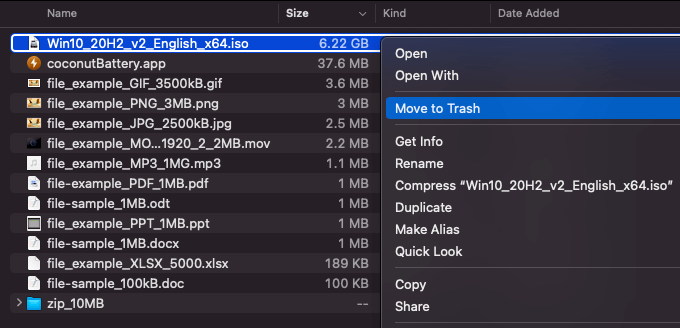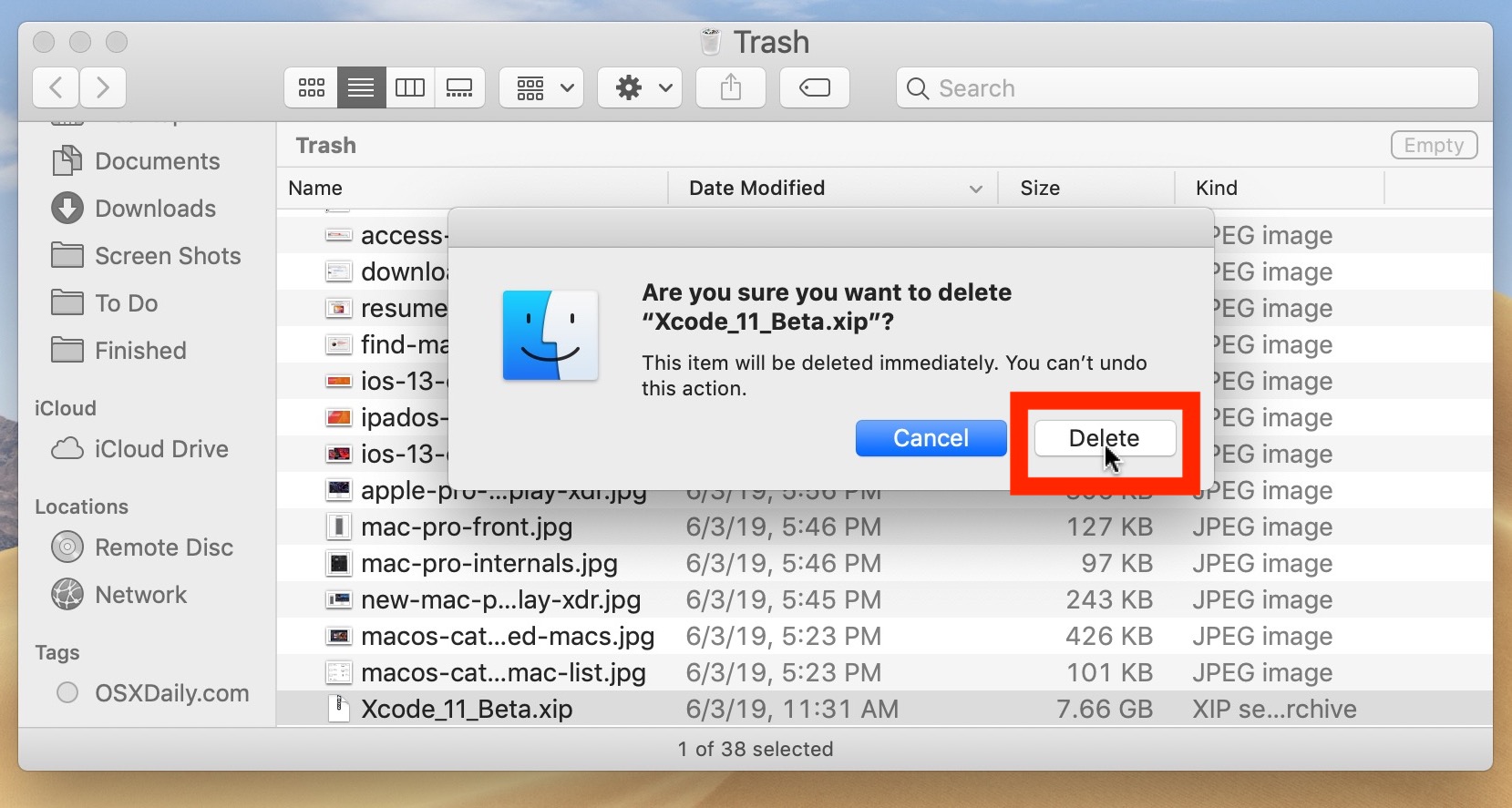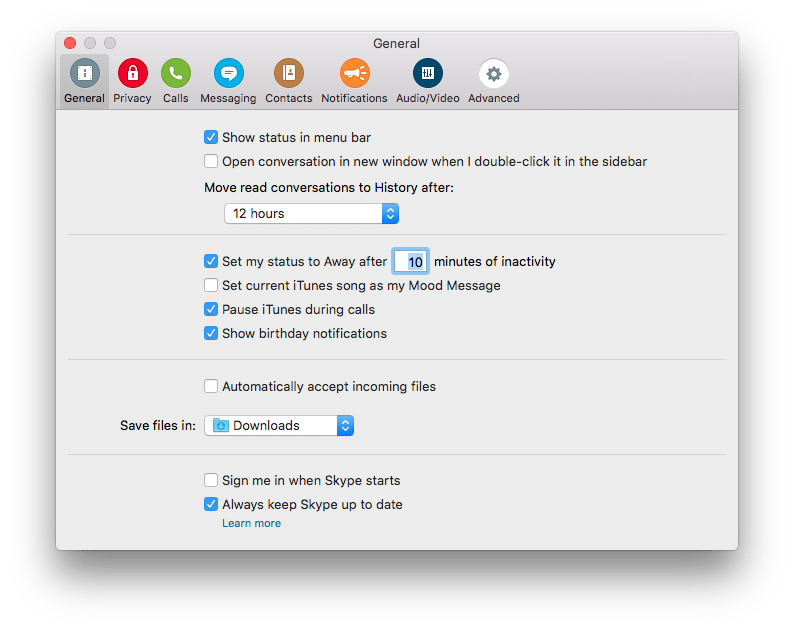Mac users often find their Downloads folder filled with disk images that they previously downloaded from the internet, files that – having already installed the apps – they forgot to delete after unmounting the image. As you may already know, installer files for macOS come with a DMG file extension – otherwise known as an Apple Disk Image – and are similar to ISO files.
- Delete Downloads Macbook Pro
- Delete Downloads Mac
- Delete Downloads Mac Book Pro
- How To Delete A Downloaded File
- How To Remove Downloads From Computer
- Delete Downloads Mac Book Pro
- How To Uninstall Recent Downloads
To clear the files in the Downloads folder for Opera, follow these steps. Open the Opera browser. Click in the upper-left corner of the window. In the drop-down menu that appears, select Downloads. In the tab that opens, you may delete each entry individually by clicking the icon on the right side and selecting Remove in the menu.
- Sep 06, 2021 Here are the steps on how to delete downloads on Mac: Open Finder. Go to the Downloads folder. Select all files in the Downloads folder. Move selected files into the Trash. Another quick solution to remove downloads from Mac is to use MacCleaner Pro. The application automatically finds downloads, as well as other types of junk files on your Mac.
- To select and delete multiple files at once, follow these steps: Hold down the Command key on your Mac's keyboard. Left-click every file in your Downloads folder that you want to delete. Release the Command key, right-click, then select Move to Bin or Move to Trash. If you have moved any files you want to keep out of your Downloads folder.
- Download and run the license removal tool. Download the license removal tool. Open the.pkg file from your Mac's Downloads folder. Note: If you get an 'unidentified developer' error, try opening the file by holding Control + clicking the file Open. Select Continue and follow the prompts in the setup wizard.
To install an app – the majority of which just require dragging and dropping – users need to mount this .DMG file just as you might mount a CD when putting it into a CD drive, which makes its contents visible on the Mac. The required software is packed into a special bundle and carries an invisible “.APP” extension.
Download CleanMyMac X from MacPaw’s website and clean up to 500MB of junk data from your computer while enjoying all the features of the software without major limitations.
Users tend to forget about the existence of these disk images after they install the software. The same is true for iOS installer files (IPSW), although using .IPSW to apply an iOS software update is considered to be a more advanced function and therefore more appropriate for tech-savvy users. Even so, it can still happen that even advanced users forget about these storage-hungry installer files.
How To Remove Installer Files
Having one or two installer files in the Downloads folder shouldn't cause any issues unless these files occupy gigabytes of space – Adobe Creative Cloud installer packages, for example. But when you realize that your Mac is running out of free space, this is a good place to check for the remains of installer files to remove them and save space.
Removing these files is as easy as the installation process: select the file and drag it to the Bin. There are cases where the software is more complex, such as Adobe's suite of programs or Mac optimization software OnyX's installer files. If this is the situation, just open the disk image and look for an uninstaller file, or launch the app and find the uninstall options. The uninstall process may differ by app, but in most cases it is hassle-free.

Most Common Issues When Removing Installer Files
The drag and drop removal method, however, may leave some junk data behind since it doesn't remove the supporting files, which, if you frequently install and uninstall apps, may end up eating into your Mac's storage.
Ever since macOS Sierra 10.12, Apple has provided users with the option to trash the installer as soon as its function is finished, a pretty handy feature considering the limited disk space on a MacBook Air.
Fortunately, Mac optimization apps such as CleanMyMac and others include a neat uninstaller utility that helps remove all files associated with the application and its temporary installation files. While this feature won’t remove the installation file, it does find the files associated with specific software after selecting the app(s) that you want removed.
Installer files are easier to remove because they can be considered as .ZIP files. To move the installer to the Trash, however, you should first unmount it, otherwise it will display an error message. After unmounting it, locate the file (usually in the Downloads folder, the default location for files downloaded from the web), and simply press the Command + Backspace keys or drag it into the trash can.
Best Mac Optimization Software of 2021
| Rank | Company | Info | Visit |
| |||
| |||
|
Get the Best Deals on Mac Optimization Software
Stay up to date on the latest tech news and discounts on Mac optimization software with our monthly newsletter.
MacBooks, despite their higher proficiency than any other laptop in their category, is not famous for the low storage capacity of the Mac drive. And you cannot do without the necessary apps and files/documents. All these downloaded files or applications are directly headed to the Downloads folder of your Mac. However, one can specifically choose a different destination as well. But, to clear space on your Mac drive, one must know how to delete downloads on Mac.
Not to mention a stacked up Mac drive can also impact your Mac’s performance and therefore, learning how to clear downloads on Mac becomes more significant. A full Mac drive may lead to slower response time, slower boot time, and maybe unwanted app crashes due to high load on RAM. So, if you have trouble understanding how to delete downloads on your MacBook, keep on reading and find ways to clear up space on your Mac computer.
How to Delete Downloads on Mac from Downloads Folder?
There is always a direct, manual process of clearing downloads on Mac. This is the folder where all the downloaded files go when downloaded on the Mac. Whether it is a mail attachment, an application, or any other file, it is all stored in the download folder. So, accessing this folder will help you clear downloads in MacBook Air or your other Mac machines.
Here’s how to delete downloads on Mac from the Downloads folder:
Step 1: Open “Finder” from your MacBook’s dock.
Step 2: There, you’ll see a separate menu on the left-hand side. There, find and click on the Downloads button. It is signified by a dark grey icon with an arrow facing downward.

Step 3: To delete a single file, or delete files individually, click on it and press delete. You and also right-click on the file and from the popped up menu, click on Move to Trash.
Step 4: To delete all the files, you can click on the first file, then hold shift and press and hold the downward arrow button simultaneously.
You can also press Command+A to select all. Finally, right-click and select Move to Trash.
Step 5: Once the files are deleted, they are not yet deleted, but are just transferred to the trash. So, head to the Trash button, right-click on it and then click on Empty Trash from the new popped-up menu. The new trash button will look like a white trash can.
Step 6: Check on the Downloads folder and ensure the files are deleted. It must be empty.
How to Delete Downloads on Mac via Google Chrome Browser?
People also use browsers to download files, media, mail attachments, etc. These files are directly stored in the download history of the browser and can be accessed directly from the browser as well. Here’s how you can access and delete downloads from Chrome.
Step 1: Open Chrome browser.
Step 2: Press CTRL+J. This will open up a new tab listing all the downloads that are stored in the system through the Chrome browser.
Delete Downloads Macbook Pro
Step 3: To delete the downloads individually, press the X [Cross] button at the side of the individual files.
Step 4: To delete all the files, click on the More Action (three-dot icon) in the upper-right corner.
Step 5: From the drop-down menu, select the Clear All button and confirm the final command to delete the downloads via the Chrome browser.
How to Delete Downloads on Mac from Microsoft Edge Browser?
The process of deleting the downloads from Microsoft Edge browser is the same as that of the Chrome browser; however, let alone one single step. You must delete downloads from these browsers to clear downloads on Mac and clear up some space on the drive.
Here’s how you can delete downloads on Mac from Microsoft Edge browser:
Step 1: Open Microsoft Edge.
Step 2: Press CTRL+J. This will open up a new tab listing all the downloads that are stored in the system through the Microsoft Edge browser.
Step 3: To delete files press on the Hub button signified by three-vertical lines.
Step 4: Click on Clear All to delete download history.
Delete Downloads Mac
How to Delete Downloads on Mac from Safari Browser?
Step 1: Open Safari browser.

Step 2: Click on View. From the drop-down menu, click on the Show Downloads button.
Step 3: To remove download, right-click on it, and then select Remove.
Delete Downloads Mac Book Pro
Step 4: To remove all the downloads altogether, you’ll notice a Clear button on the top-right corner of the downloads menu.
Step 5: Click on the Clear button and remove all the downloads from the Safari browser.
How To Delete A Downloaded File

How To Remove Downloads From Computer
Pro Tip
Delete All The System Junk From Your Mac In One Click
Delete Downloads Mac Book Pro
Download CleanMyMac X on your Mac, let it run the scan and find out all the junk. As and when detected, you can simply click ‘Clean’ for complete removal of annoying junk and downloads that are lying around the system for no reason.